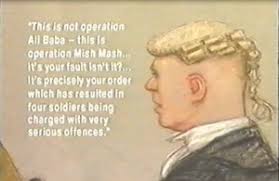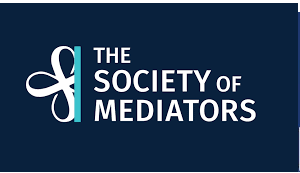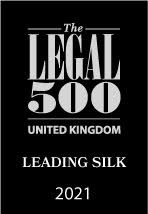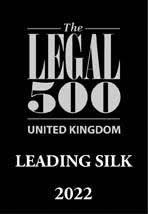Information Hub
“Joseph quickly put the client and us at ease with his competence, expertise ability to quickly understand the underlying facts and commercial position”


3PB’s biker barrister Joseph Giret KC……
Truth Matters – Enhanced Measures for the Taking and making of Witness Statements for use at Trial
By Joseph Giret KC and Amanda Fernandez 3PB Barristers
This is an article on Practice Direction 57AC on Witness Evidence at Trial (“PD57AC”). PD57AC will apply to witness statements for use at trials in the Business and Property Courts, specifically to claims issued after 6 April 2021 or to existing proceedings where the witness statements for trial are signed on or after 6 April 2021.
Background
Seeking to address concerns related to unnecessary and burgeoning lengths of witness statements, and the more serious concerns that practitioners shared, Judges, solicitors and counsel alike, that factual accounts being placed before the Courts were not of the most accurate order, where judges, whose function in assessing the credibility and or accuracy of a witnesses evidence is crucial and who had been finding this task being made more difficult by a failure of those tasked with the drafting of witness statements to abide by the multitude of available present guidances [see Queens Bench Guide at 10.9.5, Chancery Guide at 19.6, additionally the Bar Code of Conduct for counsel rC6 and gC7], PD57AC is the outcome of the work of the Witness Evidence Working Group (“The Group”). The Group was set up in 2018 by the Business and Property Courts following concerns from Commercial Court Judges on the way witness statements were being prepared and the issues that courts were facing as a result.
It is little surprise then that Mr Justice Leggatt said much earlier [2013] EWHC 3560 (Comm) para.24
“In the light of these circumstances, the best approach for a judge to adopt in the trial of a commercial case is, in my view, to place little if any reliance at all on witnesses recollections of what was said in meetings and conversation, and to base factual findings on inferences drawn from the documentary evidence and known or probable facts”.
The Group reflected on the more perfect procedure that was the case in civil trials and endures today in criminal trial, namely the giving of primary evidence in chief through oral examination. The writers can’t accurately recall when the change in procedure arrived however it was post the Civil Evidence Act 1968 and around 6-7 years afterwards when introduced by the Rules of the Supreme Court [“RSC”]. Issues are faced daily by Judges who have contributed to the common law understanding of best practise; this case law is to be found in the Civil Procedure Rules Vol 1 [2020] and is summarised below.
The writers will firstly look at those issues and will then move on to providing an overview of the contents of PD57AC with commentary on how the practice direction may resolve the issues.
Issues faced by the courts
The commentary at 32.4.5 of the White Book refers to several cases that help to illustrate some of the issues the courts have identified with the way witness evidence is currently prepared.
Many of the issues arise when someone other than the witness has prepared the statement. For example, when a witness does not speak English and the witness statement is prepared by someone else then filed in English rather than in their own language pursuant to paragraph 18.1 in Practice Direction 18. This results, unsurprisingly in considerable problems with the examination of the witness, as was the case in Frenkel v Lyampert [2017] EWHC 2223 (Ch).
Another issue is the extent to which the draftsmen is involved which could call into question the reliability of the evidence. For example, in Assi v Dina Foods Ltd [2005] EWHC 1099 (QB) it became apparent that the Claimant had drafted the statements of the witnesses on whose evidence he intended to rely, to the extent that he had directed the contents of the statements. The judge remarked that this “reduced and possibly extinguished” the reliability of the evidence.
A similar issue arose in Aquarius Financial Enterprises Inc v Lloyd’s Underwriters (The Delphine) [2001] 2 Lloyd’s Rep. 542, where it transpired that the underwriter appointed by the Defendant had used bullying tactics when interviewing the Defendant’s witnesses for the purpose of taking their witness statements. The judge remarked that the danger was that a court would not always be aware of how a statement had been taken and that the court should be able to “rely on the assumption that it has been taken properly” [para 49].
The courts have repeatedly had to point out that witness statements should not contain matters of fact outside the witness’s own knowledge, for example by referring to/reciting facts with reference to documents within the trial bundle. In JD Wetherspoon Plc v Harris [2013] EWHC 1088 (Ch); [2013] 1 W.L.R. 3296 the Claimant was successful in his application to have the Defendant’s witness statement struck out on this basis. The court stressed that a witness statement should only contain evidence which that person would be allowed to give orally in evidence in chief: it is for the legal representative [or litigant in person, as the case may be] to make submissions on witness evidence in line with the documents contained in the trial bundle.
Another pertinent issue is the use of legal arguments within witness statements, which again unsurprisingly causes considerable issues when it comes to cross examination. For example, in Alex Lawrie Factors Ltd v Morgan [2001] C.P. Rep. 2, CA, the Defendant’s affidavit contained case law and extensive legal argument on her defence based on non est factum, and it later transpired that the Defendant had problems with basic literacy. Lord Justice Brooke stated that evidence is not to be used by lawyers “as a vehicle for complex argument” [page 8]. The use of argument in witness statements is not an issue that arises solely when a legal representative has drafted a witness statement however, as illustrated by Rock (Nominees) Ltd v RCO Holdings Plc [2003] EWHC 80 (Ch). In Rock, the court observed that witnesses using their own words are not always conscious of the limitations of what is factual evidence and what is opinion.
Finally, the courts have pointed out on several occasions that the witness statements of witnesses of fact are not the gateway for expert opinion that those witnesses are? not qualified to give. In New Media Distribution Co Ltd v Kagalovsky [2018] EWHC 2742 (Ch) (Marcus Smith J) the Claimant was successful in its application to exclude certain paragraphs from the Defendant’s witness statement as it contained expert evidence on Ukrainian and New York Law. The court re-iterated that “it is not right for the provisions in CPR 35 to be circumvented” by simply including expert evidence in statements of fact.
The issues identified above are by no means exhaustive. They have resulted in a significant waste of court time as-well as, in the case of unreliable evidence prepared by others, the risk that cases are not being decided justly.
PD57AC
The writers will now look at the provisions of PD57AC and discuss how it seeks to address the issues identified above and promote the overriding objective at CPR 1.1.
PD57AC contains five sections and an appendix, ‘Statement of Best Practice’ [‘the Appendix’ with which PD57AC states witness statements should be prepared in accordance with1. The Appendix also contains five sections. It should be noted at the outset that PD57AC does not apply to inter alia, evidence in a witness statement other than a trial witness statement2.
Much of PD57AC and the Appendix is in effect a consolidation of pre-existing rules and best practice. For example, section 2 and 3 of PD57AC mainly re-iterate the requirements contained in CPR 32 and Practice Direction 32, namely that the purpose of a witness statement is to set out in writing the evidence in chief that a witness of fact would give if giving oral evidence at trial, should not contain legal argument and should not contain commentary on the evidence.
Similarly, with regards to the issue of witness statements being prepared in a witness’s own language, section 3 of PD57AC merely signposts the current requirements at paragraphs 18.1, 18.2 and 23 of Practice Direction 32: that a witness statement should be drafted in a witness’s own language and that the party relying on it must file a translation.
Further, the sanctions for non-compliance with PD57AC and the Appendix contained in section 5 of PD57AC do not give the court any powers that it does not already have: the refusal of permission for a party to rely on a witness statement; the power to strike out a witness statement; ordering a witness to give evidence in chief orally; and costs sanctions.
There are however some notable changes contained in PD57AC and the Appendix. What is particularly interesting about those changes is their preoccupation with the fallibility of human memory and the ease with which one can subconsciously ascribe a matter to being their “own knowledge” when it is not.
For example, paragraph 1.3 of the Appendix states:
Witnesses of fact and those assisting them to provide a trial witness statement should understand that when assessing witness evidence the approach of the court is that human memory:
(1) is not a simple mental record of a witnessed event that is fixed at the time of the experience and fades over time, but
(2) is a fluid and malleable state of perception concerning an individual’s past experiences, and therefore
(3) is vulnerable to being altered by a range of influences, such that the individual may or may not be conscious of the alteration.
Paragraph 2.3 (1) of the Appendix goes further:
“a matter will have been witnessed personally by a witness only if it was experienced by one of their primary senses (sight, hearing, smell, touch or taste), or if it was a matter internal to their mind (for example, what they thought about something at some time in the past or why they took some past decision or action)”
In reading these paragraphs, the writers felt compelled to visit further dicta of Leggatt J in Gestmin SGPS SA v Credit Suisse (UK) Ltd & Anor [2013] EWHC 3560: [at paras.15-22]
“While everyone knows that memory is fallible, I do not believe that the legal system has sufficiently absorbed the lessons of a century of psychological research into the nature of memory and the unreliability of eyewitness testimony. One of the most important lessons of such research is that in everyday life we are not aware of the extent to which our own and other people’s memories are unreliable and believe our memories to be more faithful than they are” [para 16]
“Considerable interference with memory is also introduced in civil litigation by the procedure of preparing for trial. A witness is asked to make a statement, often (as in the present case) when a long time has already elapsed since the relevant events. The statement is usually drafted for the witness by a lawyer who is inevitably conscious of the significance for the issues in the case of what the witness does nor does not say. The statement is made after the witness’s memory has been “refreshed” by reading documents. The documents considered often include statements of case and other argumentative material as well as documents which the witness did not see at the time or which came into existence after the events which he or she is being asked to recall. The statement may go through several iterations before it is finalised. Then, usually months later, the witness will be asked to re-read his or her statement and review documents again before giving evidence in court. The effect of this process is to establish in the mind of the witness the matters recorded in his or her own statement and other written material, whether they be true or false, and to cause the witness’s memory of events to be based increasingly on this material and later interpretations of it rather than on the original experience of the events” [para 20].
Indeed, several of the changes made by PD57AC and the Appendix seek directly to address the ‘considerable interference with memory introduced in civil litigation.’ Section 3 of the Appendix, on ‘Practice’, states that any trial witness statement should be prepared in such a way as to avoid altering or influencing the recollection of a witness.
To that end, paragraph 3.4 of the Appendix warns that, “caution should be exercised before or when showing a witness any document they did not create or see while the facts evidenced by or referred to in the document were fresh in their mind.” Moreover, paragraph 3.2 of PD57AC provides that a statement must identify by list what documents, if any, the witness has referred to or been referred to for the purpose of providing the evidence. It also cautions that a witness statement should involve as few drafts as possible to avoid ‘corrupting recollection.’ 4
Section 3 of the Appendix also provides specific guidance on the preparation of witness statements by legal representatives. It first re-iterates that a legal representative must explain to a witness the purpose and proper content of a witness statement, i.e. that it should refer only to facts within their knowledge.5 More interestingly, it prescribes that a witness statement should be obtained in an interview and that that interview should take the form of an examination in chief: it should avoid using leading questions on contentious matters; use open questions; and use closed questions only to request clarification on prior answers. Notably, if an interview is not used to take evidence, the statement must specify this, and the process used instead should be described6.
Section 3 also provides specific guidance to litigants in person on how witness statements should be taken. Specifically, it directs the litigant that any questioning witnesses should avoiding leading questions and not suggest what factual account a witness should wish (or not wish) to give. Litigants in person must also ensure that a full record is kept by the relevant party of the questions posed and the answers provided.7
Finally, a major change made by PD57AC and the Appendix can be found at section 4. As well as the usual requirement for a statement of truth as required by CPR 22.1(c) and paragraph 20.2 of Practice Direction 32, the witness must provide signed confirmation that:
a. They understand that it is not their function to argue the case or to take the court through documents;
b. They understand the purpose of the witness statement is to set out facts of which they have personal knowledge;
c. They have stated honestly how well they recall matters and whether their memory has been refreshed by documents, and if so how and when;
d. They have not been asked or encouraged by anyone to include in their statement anything that is not their own account.
If the witness statement was prepared with the assistance of a legal representative, the legal representative must certify that:
a. They are satisfied that the purpose and rules on content of trial witness statements and proper practice in relation to their preparation have been explained to the witness;
b. The witness statement complies with PD57AC and paragraphs 18.1 and 18.2 of Practice Direction 32, and that it has been prepared in accordance with the Statement of Best Practice contained in the Appendix to PD57AC.
As has been stated above, much of PD57AC and the Appendix is a consolidation of pre-existing rules in one place. They re-iterate, in plain English, that the proper function of a witness statement is to give evidence of fact, not to argue a case or provide commentary on the evidence. This will undoubtedly aid litigants in person as well as serve as a reminder of best practice to legal representatives. It is hoped that this will reduce the sorts of issues faced by the courts in the cases outlined above.
It is also hoped that the new rules on how evidence should be taken and the reminders of what does and does not constitute “one’s own knowledge” will ensure that the evidence of fact given by a witness is, insofar as is possible, reliable and untainted by the process of relaying it for litigation.
If the Group’s strategy is successful, the virtual clock, as with all else in these Covid times, will be wound backwards to the pre-RSC change of regime times, about which the Group said [para. 13]
“the experience in criminal trials, and of the position in civil trials before the introduction of witness statements, suggests that the best evidence is often obtained by a traditional examination in chief, when witnesses are giving their evidence in their own words and give a more genuine version of their recollection”
The Groups vision for the future is best summed up using its own words [para. 11]
“The current practise has a number of advantages, at least if witness statements, treated as evidence-in-chief at trial, have complied in letter and spirit with the current rules and guidance”.
The aspiration and ‘overall objective’ [to coin a phrase] in other words is to enable the….. “modern ‘cards on the table’ approach”…. to trial preparation to continue more efficiently than before; it is hoped that the task of those [judges] charged with the responsibility to make the assessments as to witness credit and factual findings, as enhanced by these prescriptions, is assisted and the trial process rendered more efficient.
This document is not intended to constitute and should not be used as a substitute for legal advice on any specific matter. No liability for the accuracy of the content of this document, or the consequences of relying on it, is assumed by the author. If you wish to discuss this article further with the authors or to instruct one of our barristers on a matter relating to this or any other matter, please contact david.fielder@3pb.co.uk.








